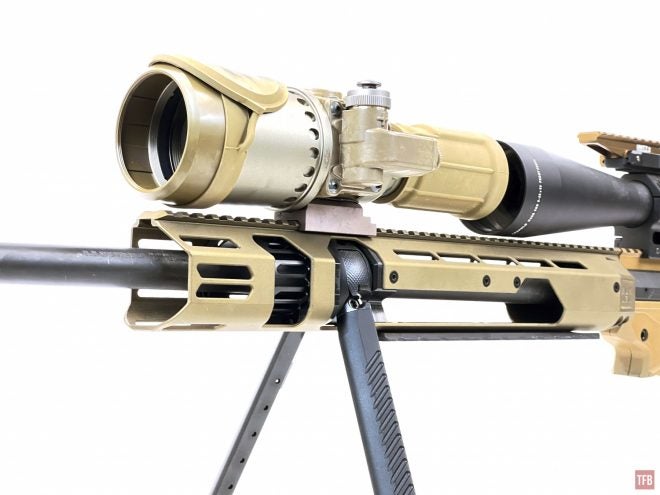On this Friday Night Lights, we will take a look at an L3Harris Clip-On Night Vision Device – Long Range (CNVD-LR). Clip-on night vision devices are used for seeing farther at night than a typical NVG on your face. They are often mounted inline in front of a day optic like a rifle scope or spotting scope. I will compare this to other well-known clip-on night vision devices and see how the CNVD-LR stacks up against them.
CNVD @ TFB:
- Friday Night Lights: Magnum Universal Night Sight (MUNS) PVS-27
- Friday Night Lights: NVD KAC UNS®SR Night Vision Clip-On
- Friday Night Lights: Simrad KN203 Clip-On Night Vision
L3 Warrior Systems CNVD-LR
When it comes to long-range night vision clip-ons, most shooters go with a PVS-30 or PVS-27. However, the CNVD-LR is arguably better than them depending on your priorities. The biggest difference you will notice about the CNVD-LR is the weight. Below are the weights for a PVS-27, PVS-30 and CNVD-LR.
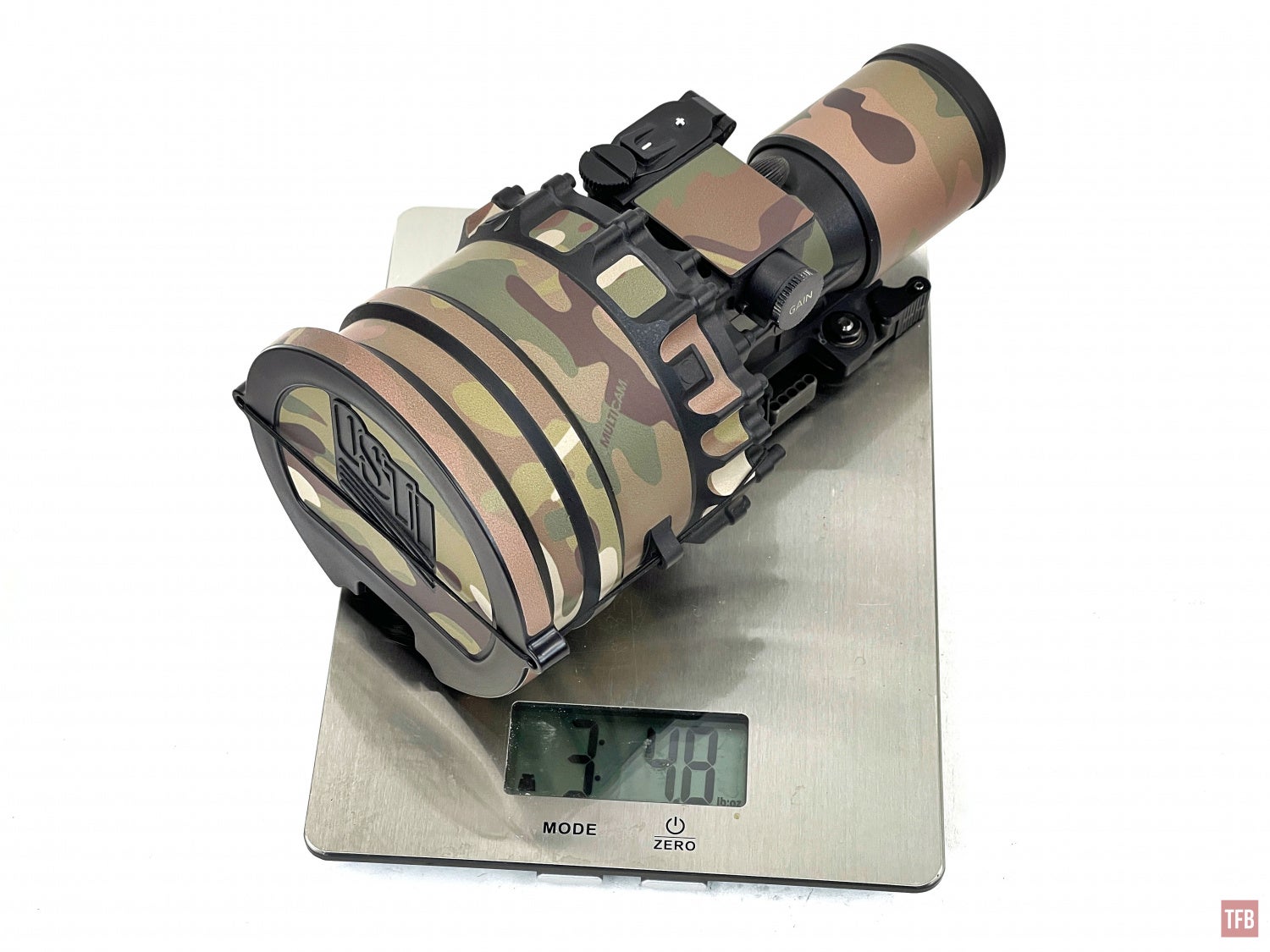

The CNVD-LR weighs half that of the 27 and 30. The weight is pretty impressive. It is just 12 oz more than the KAC UNS®SR which is much smaller but can’t see as far as the CNVD-LR.

Another major difference between the CNVD-LR versus the 27 or 30 is the size of the glass. The CNVD uses a catadioptric lens (mirror lens) and so does the PVS-27 but it is a lot smaller. See the photo below.

L-R: CNVD-LR, PVS-30, PVS-27
The downside to the CNVD-LR objective lens is the size of the front mirror (the black circle). That means there is less glass to let light in.

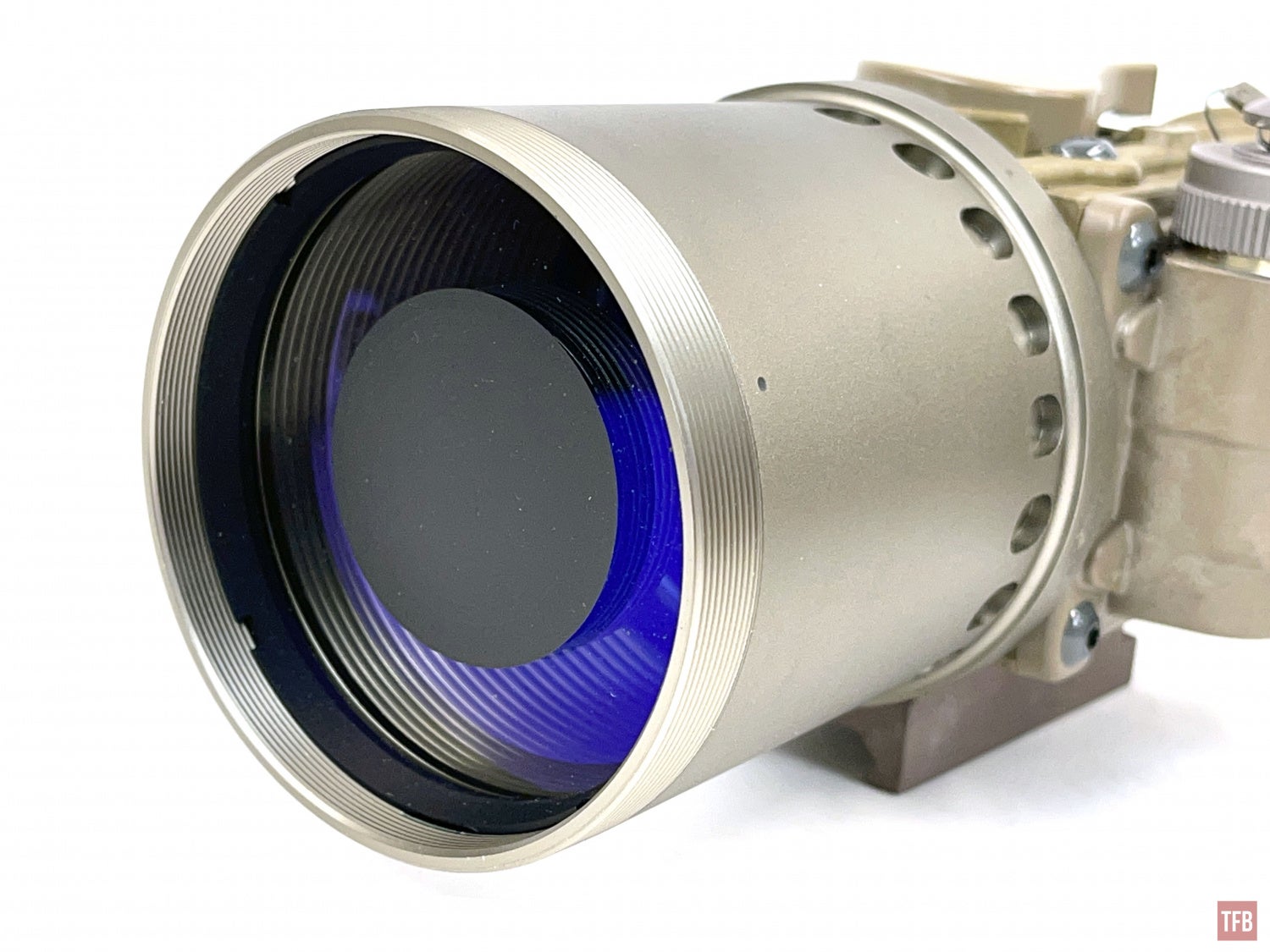
The objective lens is threaded on the outside so you can install the glare stop. It is a polymer ring to help minimize glare, it is like a lens hood. It is also used to hold the rubber lens cover in place.

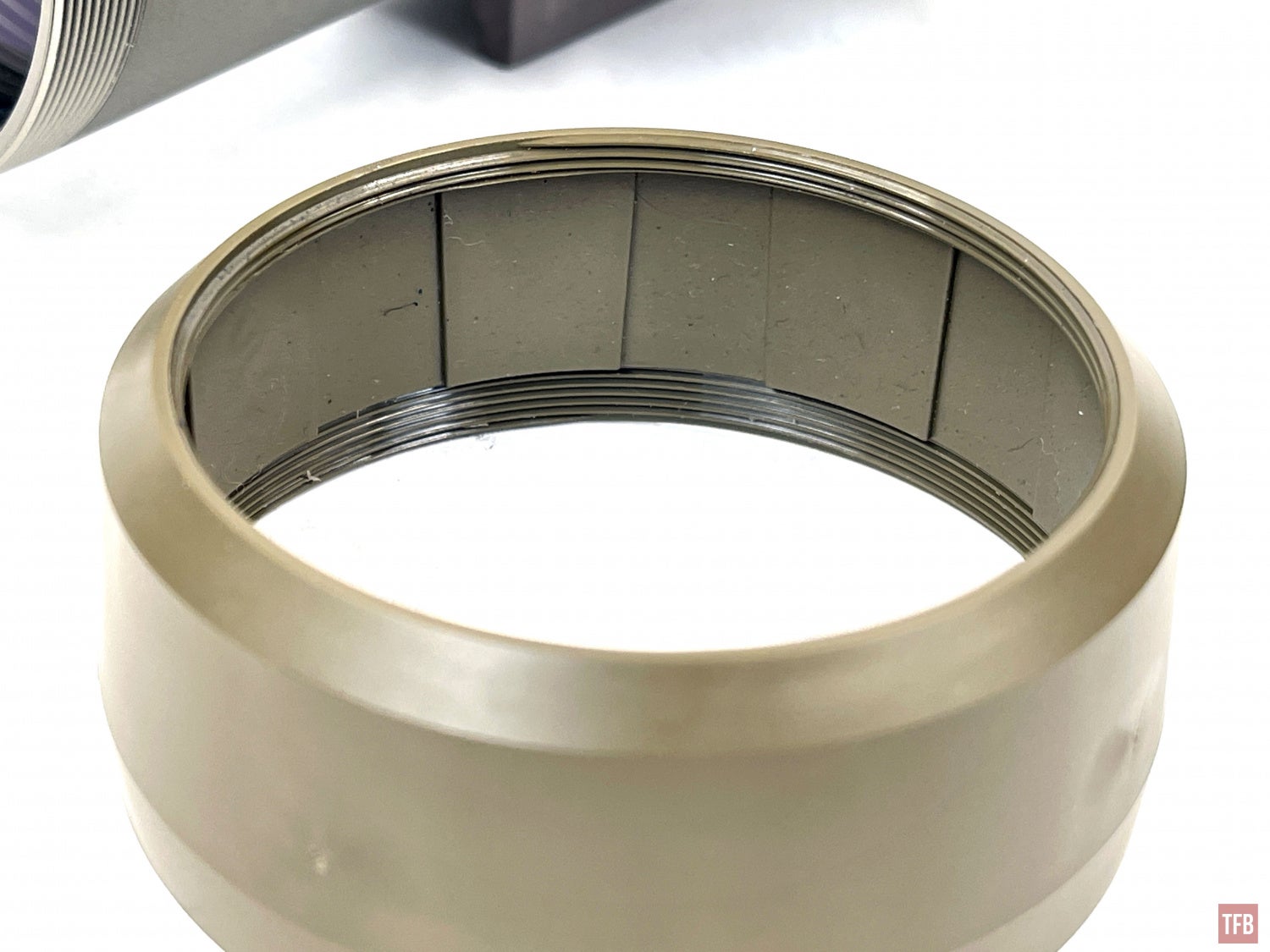
The PVS-30 and PVS-27 come with a foam wrap to block light between the clip-on and objective lens of your day scope. The CNVD-LR comes with a rubber sleeve that covers the rear eyepiece.
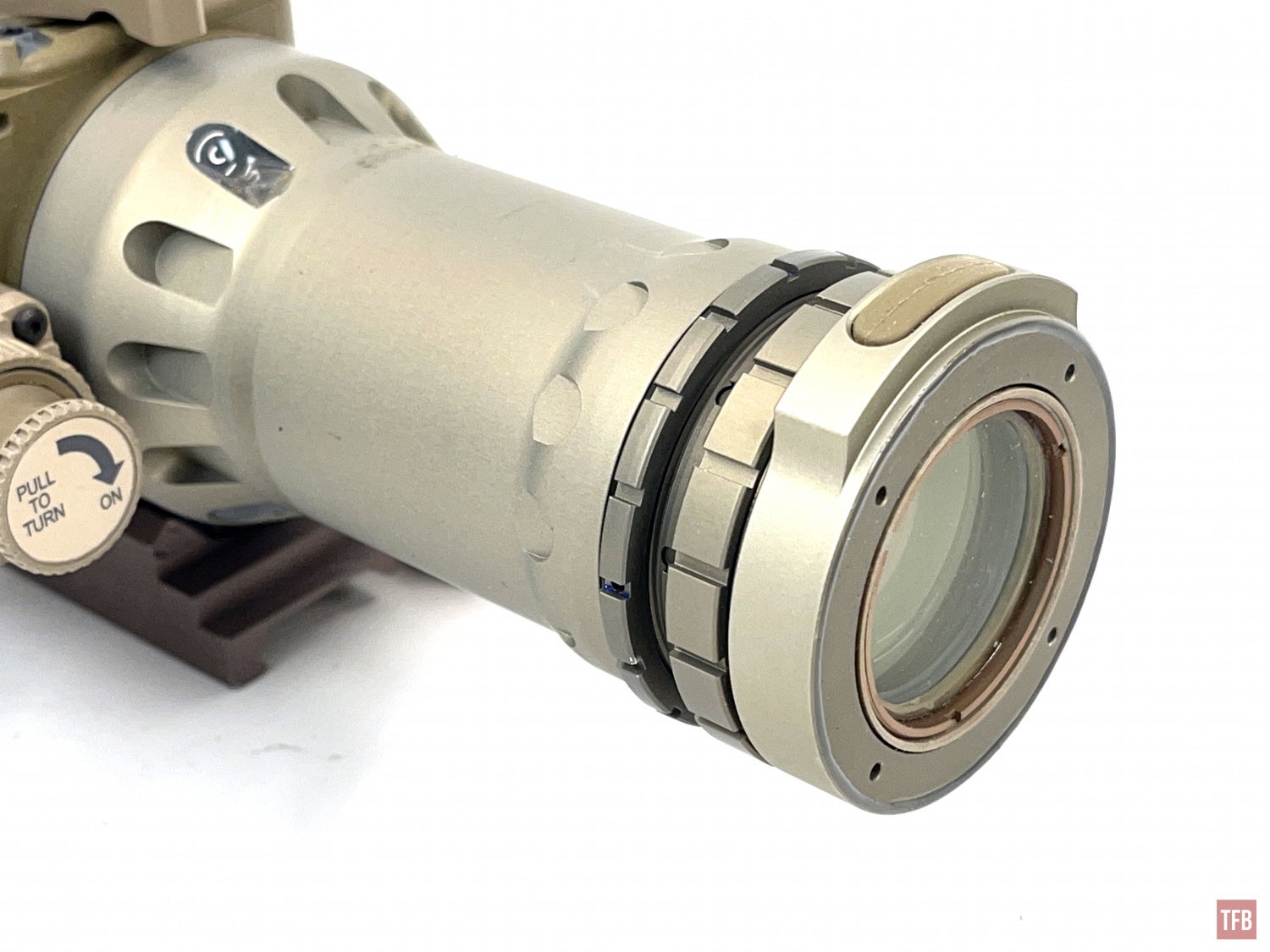
CNVD-LR rear eyepiece without rubber sleeve.

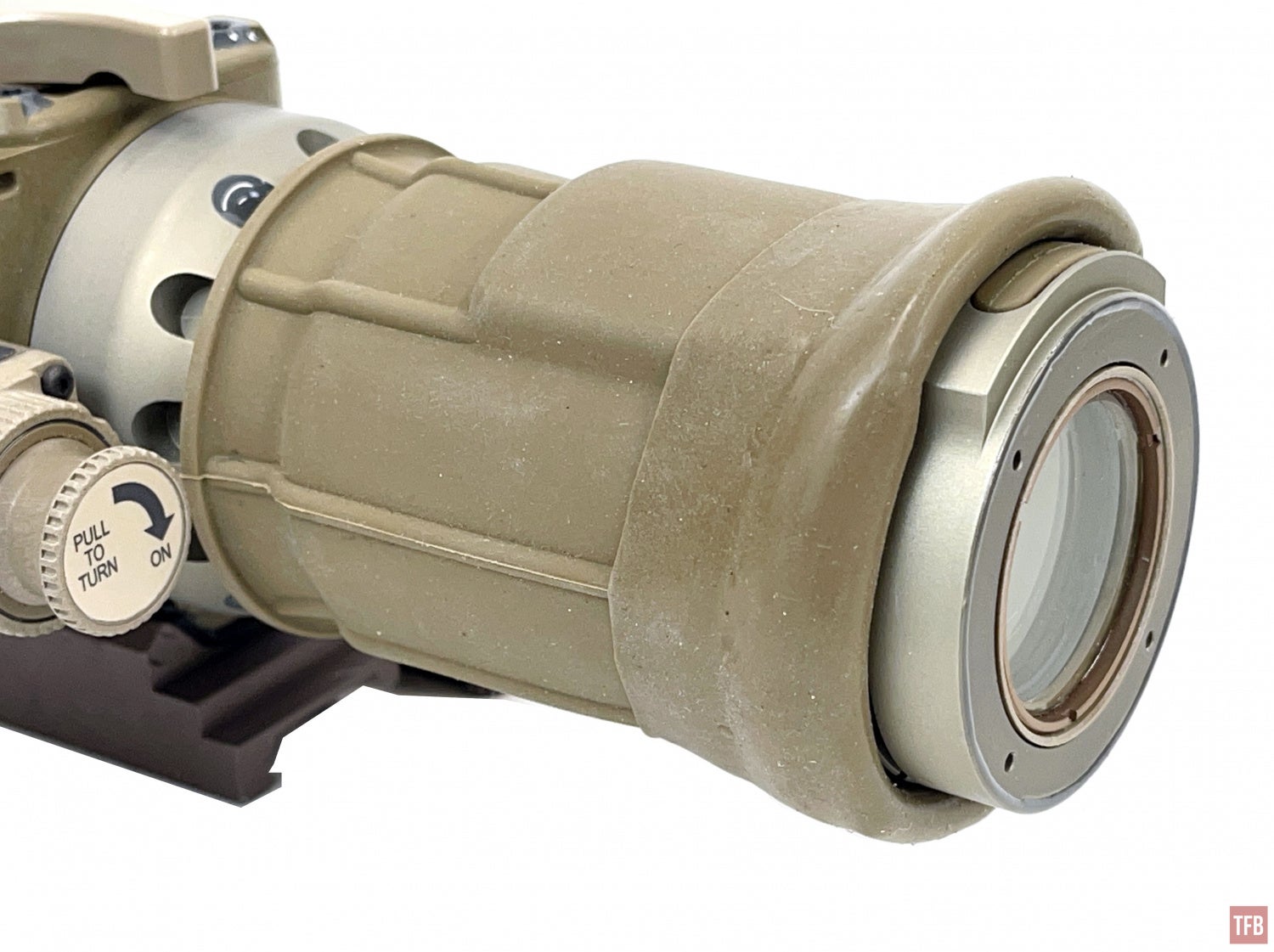
The rubber sleeve is used to dock your day optic. You line up the day optic and slip the rubber sleeve over the objective lens of your day optic. This does not really work with larger objectives like an actual rifle scope or spotting scope.
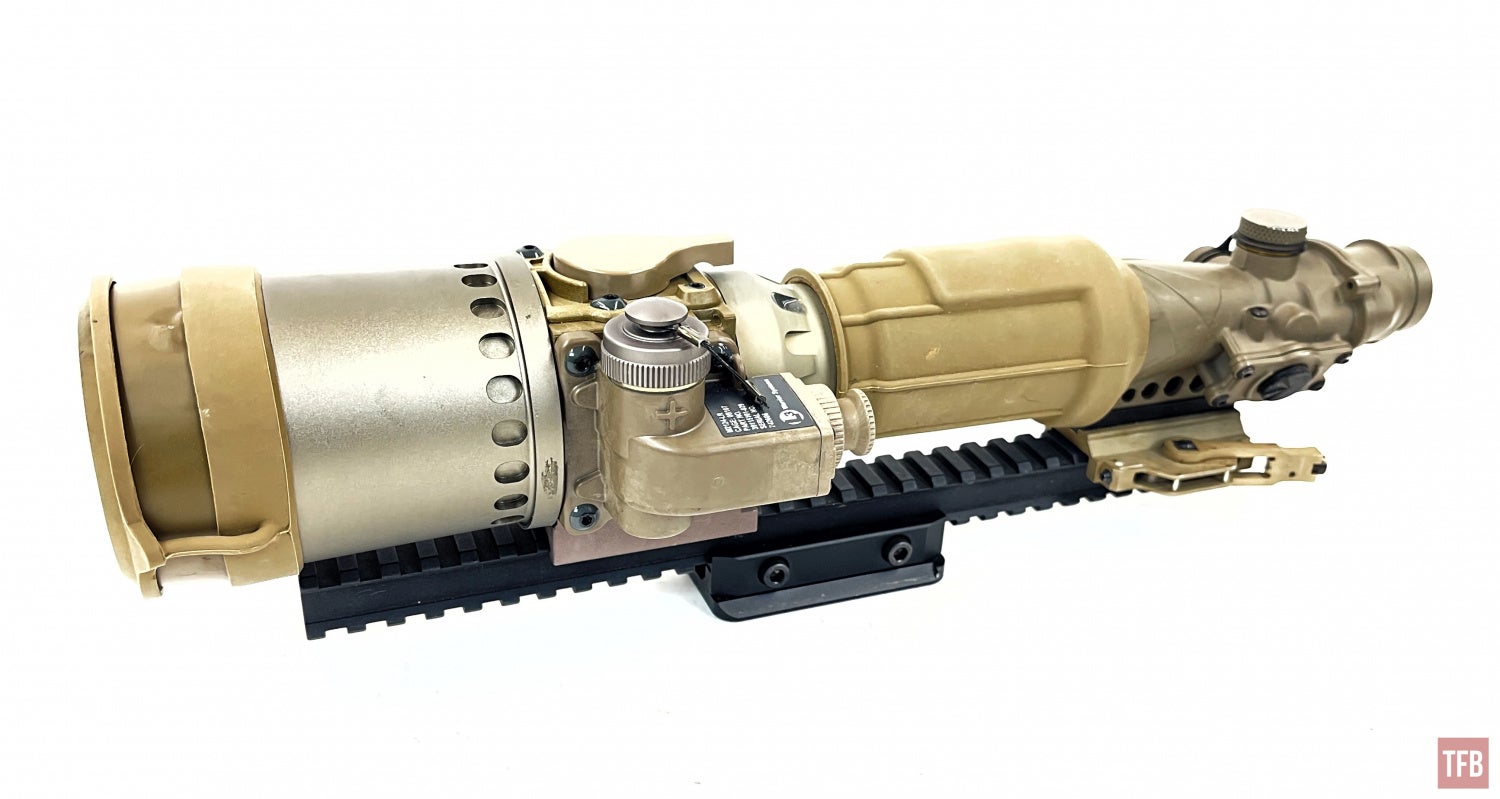
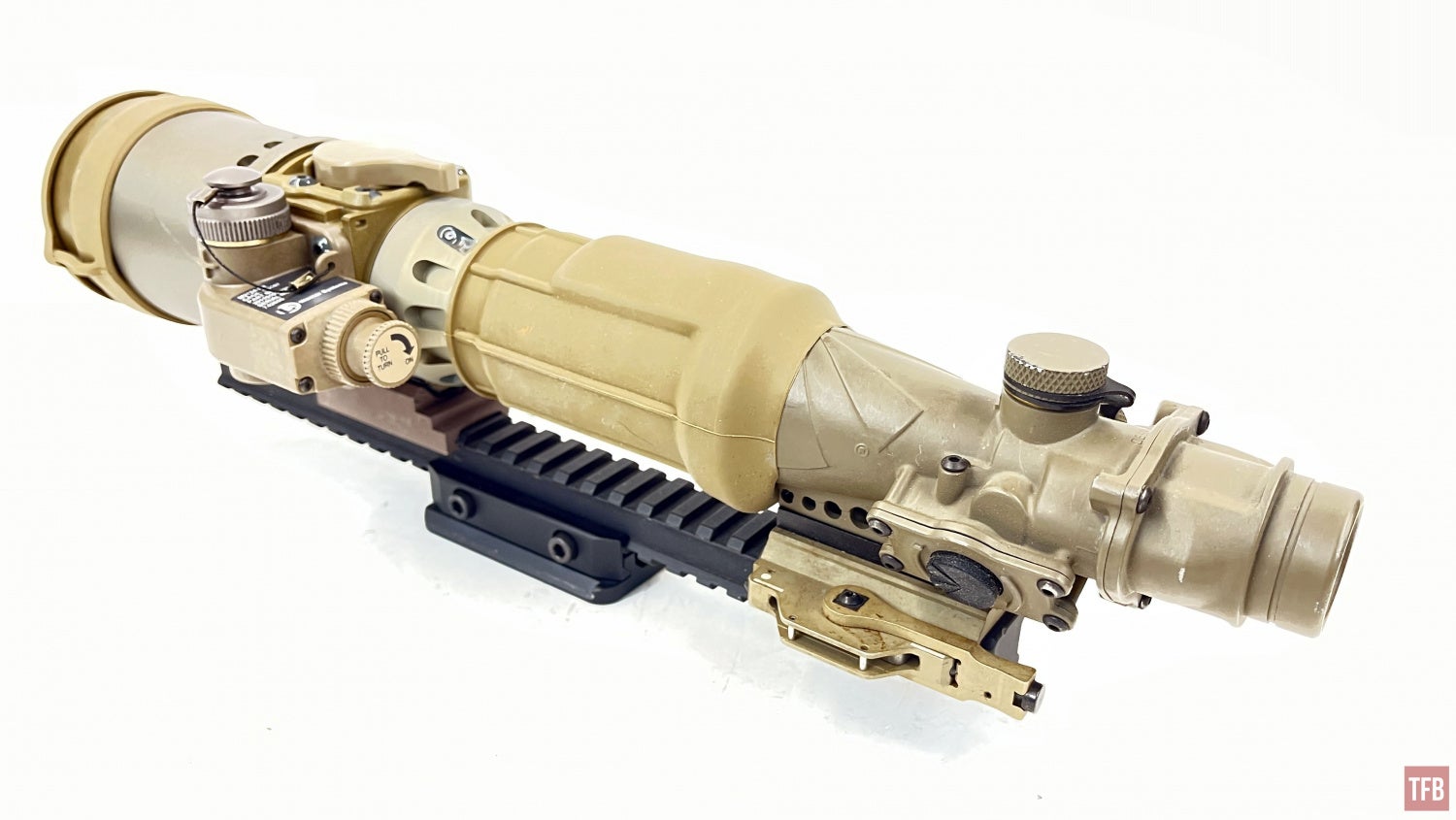
Powering the CNVD-LR
The CNVD is dual fuel like the newer PVS-30. It can be powered with a CR123 or a AA with an adapter. Unlike the PVS-30 single battery compartment, the CNVD uses a threaded spacer to lengthen the battery compartment for use with a AA battery. If you want to go back to using CR123 batteries you need to remove the spacer.

AA battery adapter installed
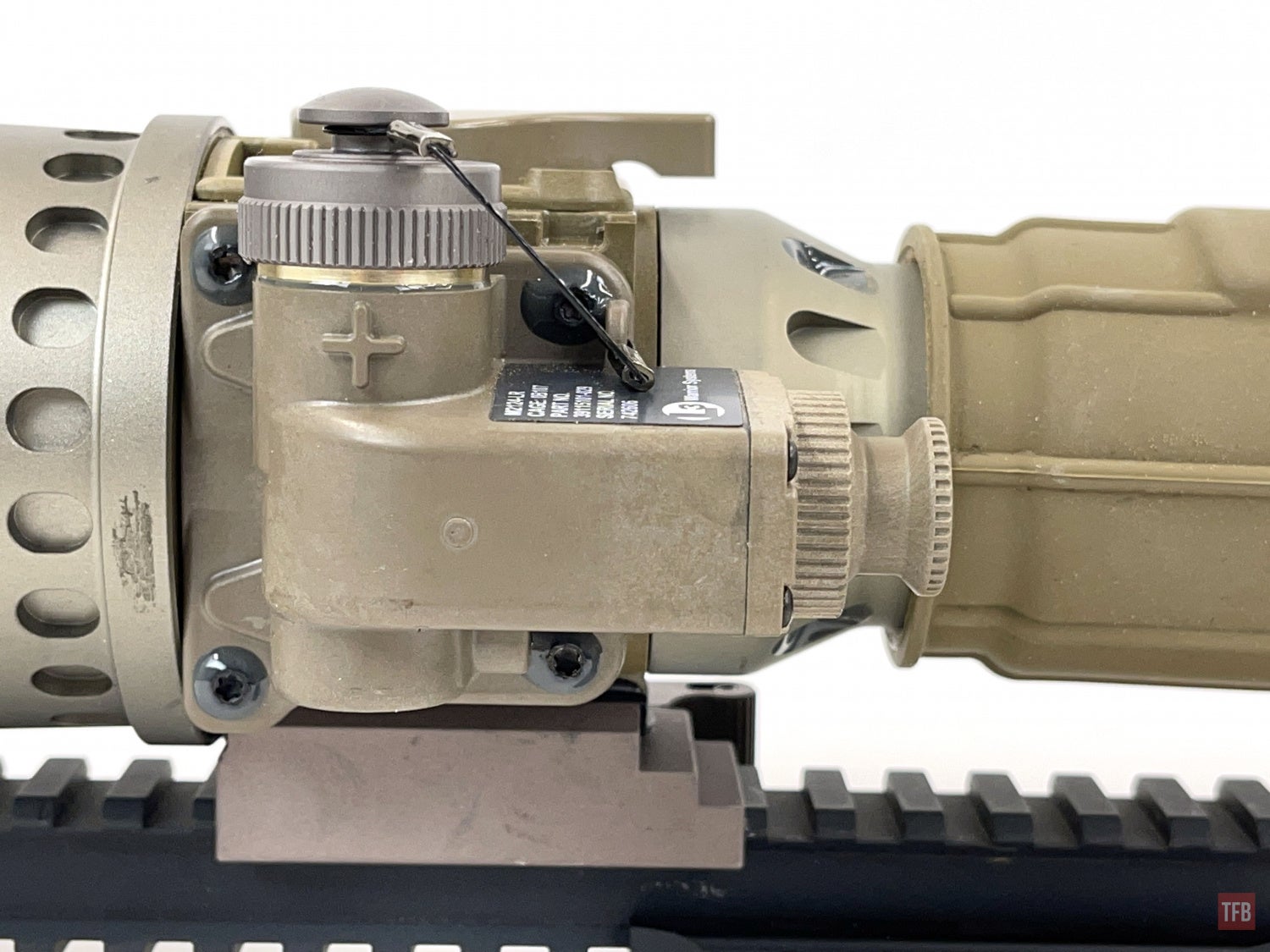
CR123 battery setup

AA battery with spacer
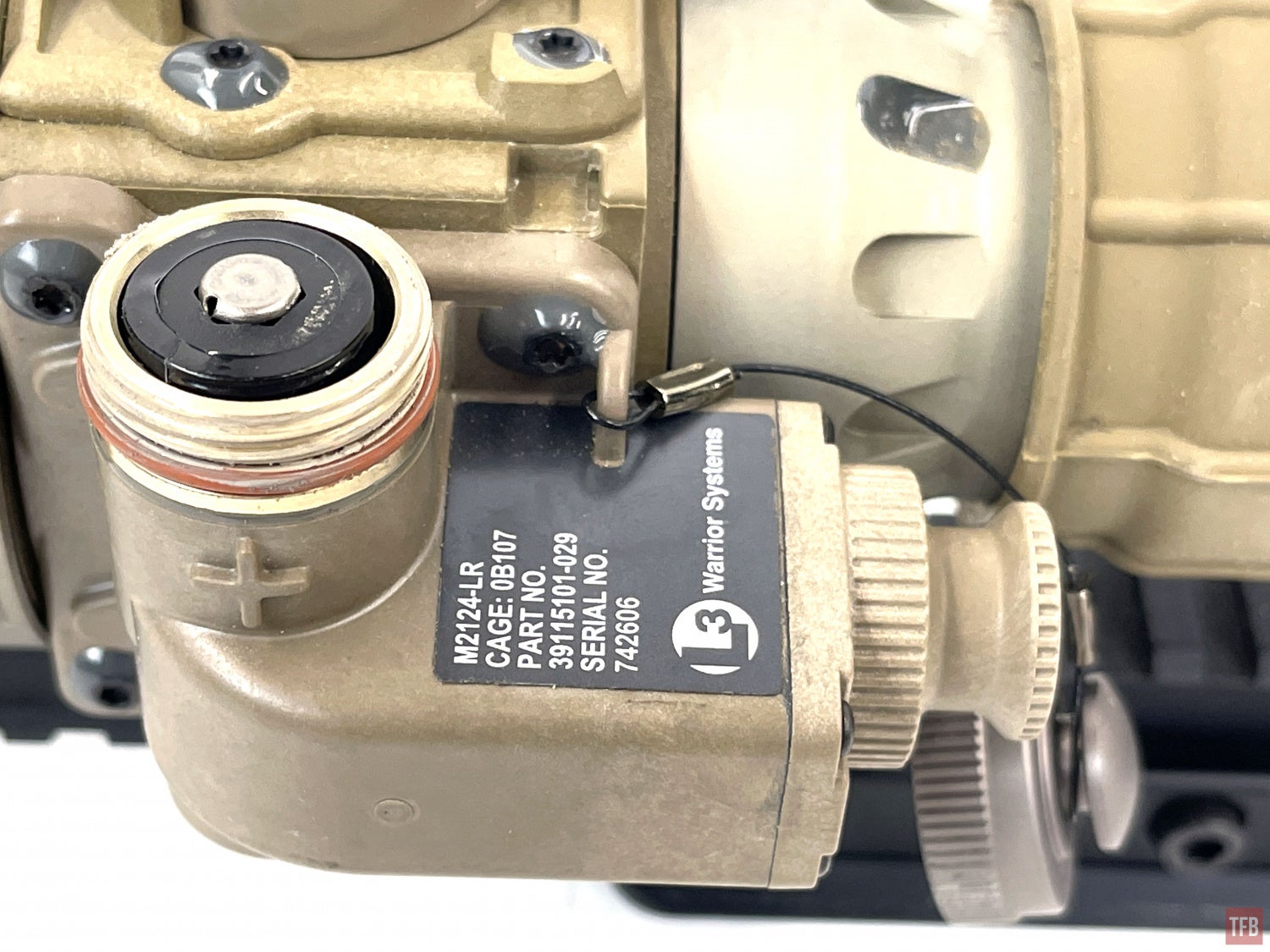
CR123
Controlling The CNVD-LR
Turning the PVS-24LR is similar to the PVS-30 and PVS-27. However, the on switch is positioned rearward where the other clip-ons position them 90º to the side. The PVS-24LR is a little different in that it starts off at the lowest gain level, you have to turn the knob all the way to max gain. The 30 and 27 start with max gain and you keep turning the power knob to reduce the gain.
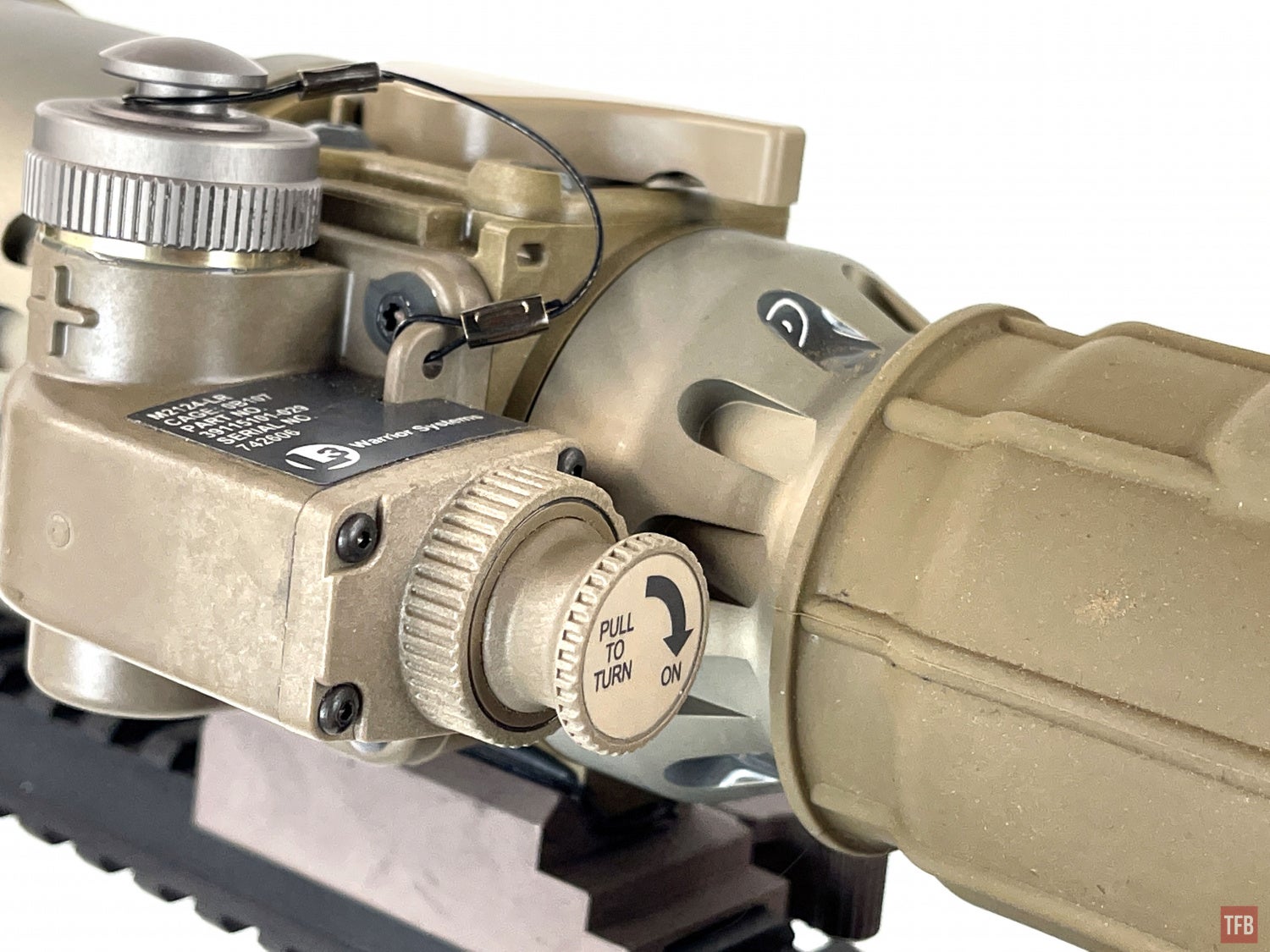
One of the biggest downsides to the PVS-30 is adjusting focus. It has a large ring that is really far forward making it difficult for people with shorter arms to reach it while maintaining sight picture. The PVS-24LR has a throw lever in the middle of the housing making it easier to reach and adjust,.

Using The CNVD-LR
The newer versions come with L3 white phosphor tubes. While performance between the green phosphor and white phosphor only comes down to the specs of the tubes, white phosphor is more pleasing to the eye for most people. I was curious to see how the higher specs on the PVS-24LR compared to my PVS-30 and PVS-27.
The PVS-24LR is optimized for 8x-12x optics but you can use magnification ranges outside of that. 3x is the bare minimum to see a full image otherwise the image is smaller than you would like.


I compared this CNVD-LR against my PVS-27 and I did not see a significant improvement in the image on the CNVD-LR. The PVS-27 has a lower performing tube. According to some sources, the 27 has a minimum of 1344 FOM. But without a spec sheet, it is hard to know tube performance. However, it is safe to assume that the tube in the 27 would not be better than the CNVD-LR. That being said, could the larger lens be helping the 27 to perform similarly to the PVS-24LR? It appears so.
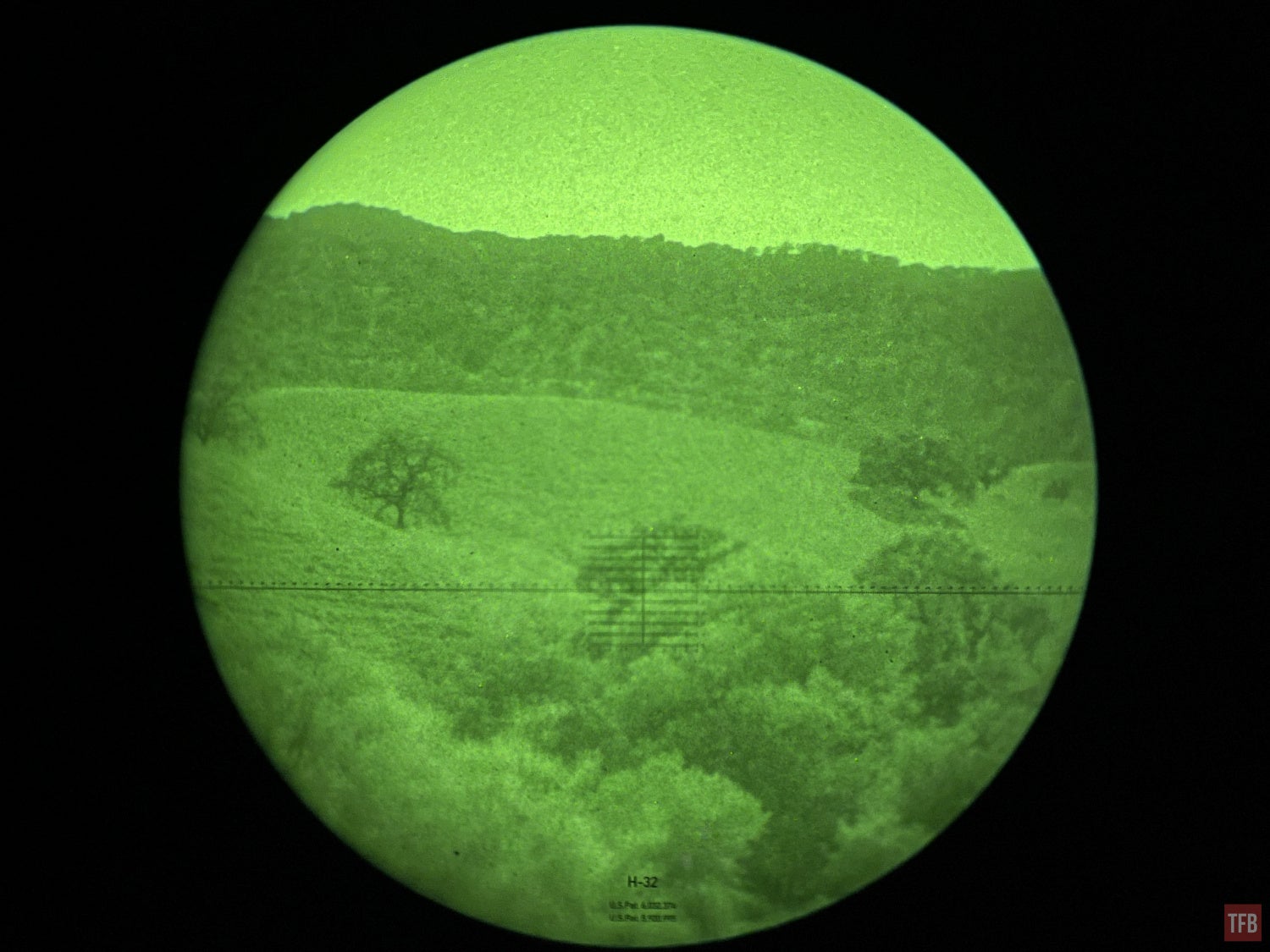
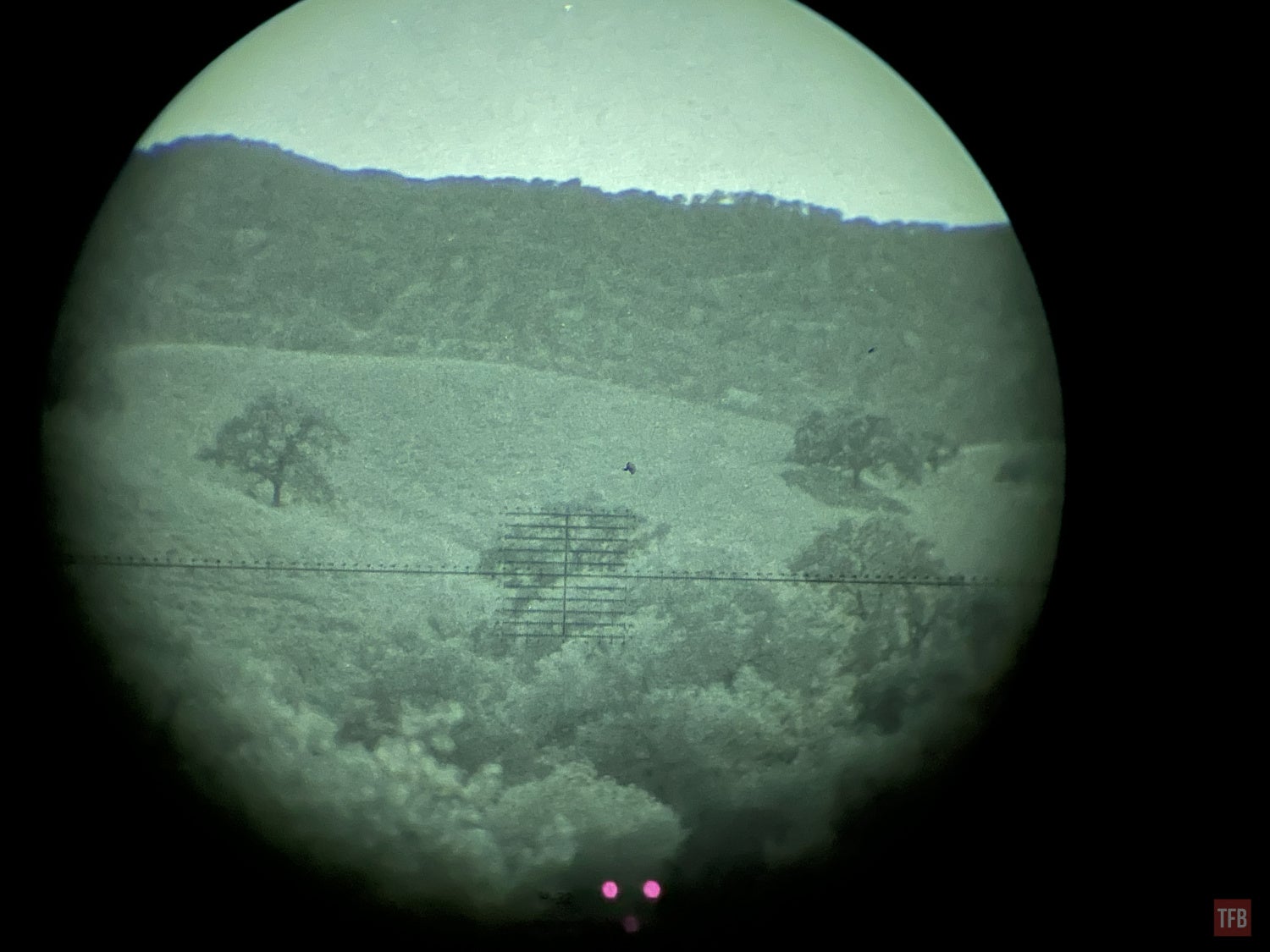
My friends and I got all our clip-ons together to compare them all under the same conditions.
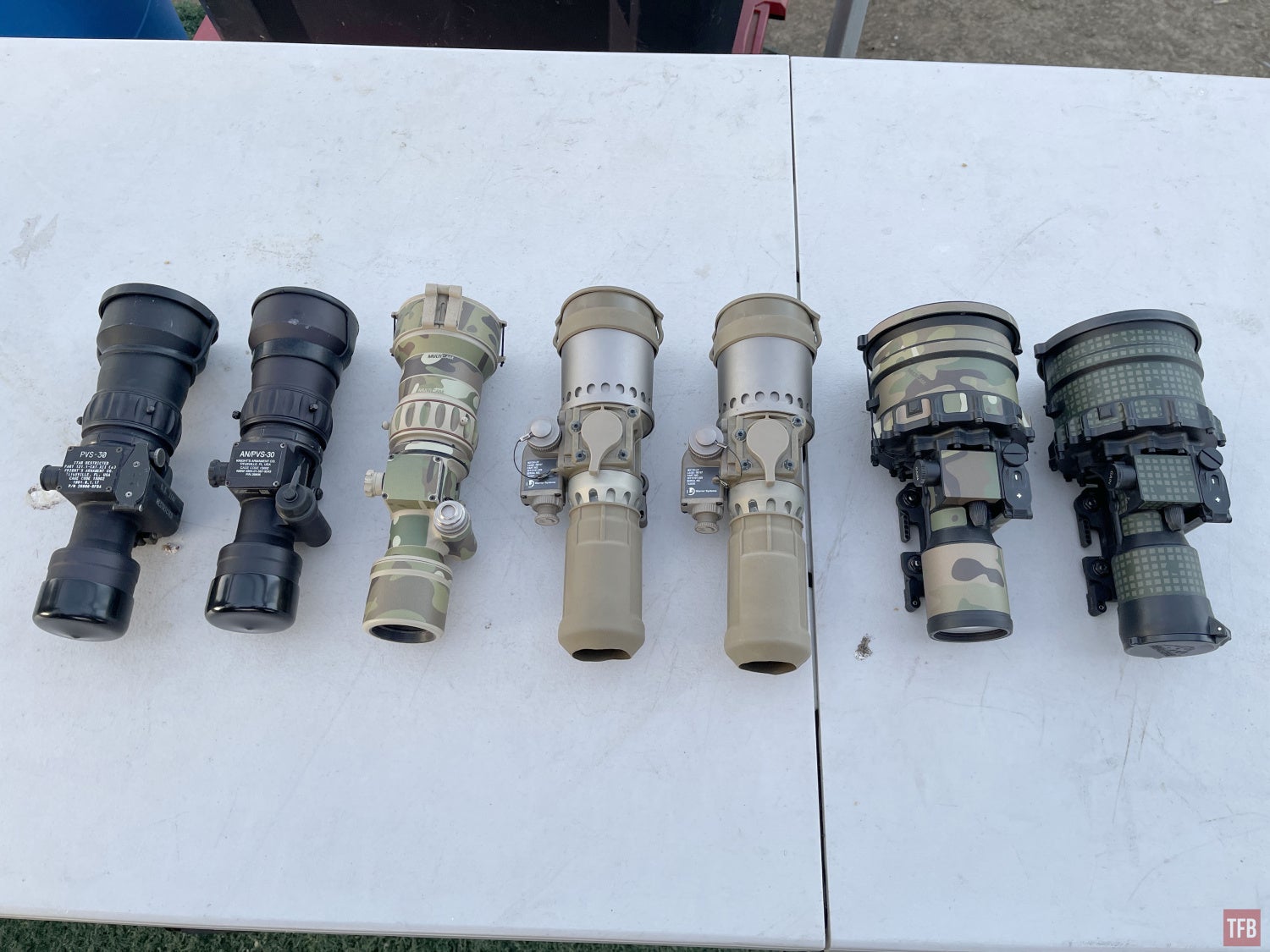
L-R: Refurbished PVS-30 (EuroOptic), Retubed Unfilmed WP L3 PVS-30 (Sureshot NightVision), CNVD-LRx2, PVS-27 (Commercial), PVS-27 (Mil/LE)
My friend Kevin already had the CNVD-LR and we had tested it against the PVS-30 and PVS-27. I was able to borrow another CNVD-LR from another friend so we could see if Kevin’s unit was performing as it should. Sure enough, there is no discernible difference between the CNVD-LR units. What we were very curious to find out was what a retubed PVS-30 would look like in comparison. A new friend, Marco, had Sureshot Night Vision retube a PVS-30 with an L3 unfilled white phosphor tube. The spec sheet says the tube has 2500 FOM. CNVD-LR have a minimum FOM of 2376+, according to TNVC. We do not know the specs of the CNVDs but they should be similar to the retube.
This video briefly shows the 24LR vs the retubed 30. The video does not do the images justice. The 24LR has a noticeably noisier image than the 30. There was less scintillation in the PVS-30. We think this may be due to the larger lens.
Another comparison that we did was the refurbished PVS-30 vs the mil-spec tan PVS-30. The refurb 30 was what EuroOptic offered a couple years ago. The mil-spec 30 has a better tube in it. According to Marco, the refurb PVS-30 has 1984 FOM and the mil-spec PVS-30 should have a higher-performing spec tube that is over 2,000 FOM.
Final Thoughts On the CNVD-LR
The white phosphor is appealing but the unit that I borrowed has a blemish in zone 1 of the image intensifier. Take a look at the image posted just below the green phosphor image. You can see a black speck on the image. Well when you zoom in, that blemish appears bigger. See the image below. That is a sizable blemish and this CNVD-LR is for a local Para Rescue unit. I can not believe this passed quality control from L3Harris.

I was tempted to get a CNVD-LR but they are easily double the price of a PVS-30 or PVS-27. Kevin’s cost him just shy of $9k. Retail is at $13k, that is what my PJ friend paid albeit govt funds. After seeing how well the PVS-27 performs to the PVS-24LR as well as the retubed PVS-30, both Kevin and I plan to have Sureshot Night Vision retube our respective PVS-27s with white phosphor tubes. I plan to use an Elbit with 81 lp resolution. Kevin is going to use a Photonis echo white phosphor tube since they have better high light performance than Gen 3 tubes.
I am hopeful the retubed 27s will outperform the CNVD-LR. The retube service is not cheap. You have to buy a good tube and that will cost a couple thousand dollars then there is the labor which I have been told could be up to $2500. Marco paid $5300 to retube his PVS-30 housing but that was tube and labor combined.
I will revisit the CNVD-LR when the retubed 27s return. For more information on the PVS-24LR (CNVD-LR) go to the L3Harris website.
 Your Privacy Choices
Your Privacy Choices
